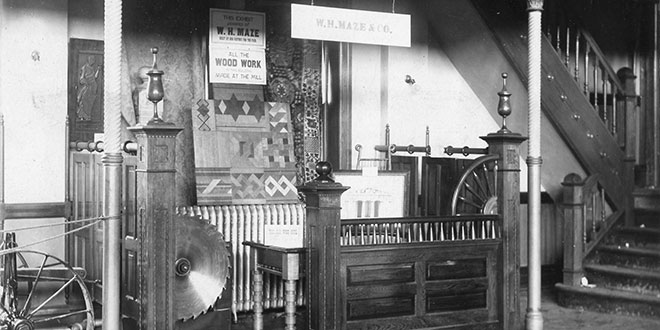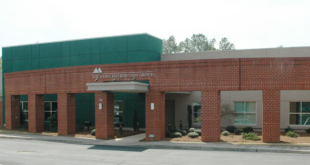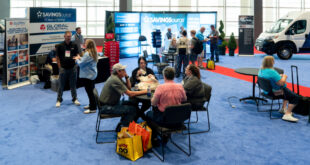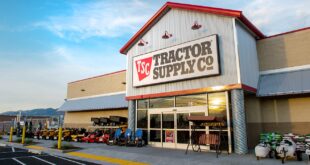When Peter Loveland heads to work, he knows he’s walking in the footsteps of family members who came before him. Loveland is the fifth generation to manage his family’s home improvement business, Maze Lumber.

Founded in Peru, Illinois, in 1848 by Loveland’s second great-grandfather, Samuel Nesbitt Maze, Maze Lumber continues to thrive today thanks to the leaders from the past.
“Samuel Maze arrived in the United States in 1836 from Ireland looking for new opportunities,” Loveland says. “He was a masonry contractor for many years before he decided to get in the lumber business. He chose to open his lumber business on the banks of the Illinois River, which was a very smart move on his part.”
Maze Lumber customers won’t find coal or other products from yesteryear at the business anymore, but they will encounter the same helpful service that has been passed down from generation to generation, Loveland says.
Lessons From the Past
In the mid-1800s, Maze recognized the importance of being able to get materials as quickly as possible to builders. By opening his business along the Illinois River, Maze was able to get products from up north that passed through the Illinois-Michigan Canal, Loveland says.

Maze had a small barge built, named the Elk. He used mules to haul loads of local grain to Chicago through the Illinois-Michigan Canal. Before leaving Chicago to return to Peru, the Elk was loaded with white pine from timber stands in Wisconsin, which Maze then sold at his lumberyard, Loveland says.
Although the proximity to the river has been beneficial to the business over the years, Loveland says it has brought its share of hardships as well.
“We have been in the same location since 1848, and overall, our location and proximity to the river has been great for business,” Loveland says. “The only caveat is that we’re subject to periodic flooding. When it floods, it can be extremely destructive to our business. While we’re generally built up high enough to be OK, there have been many times during a massive flood that we’ve had to get to our north warehouse via rowboat.”
In the early years of business, Loveland says the majority of what they sold was timber from Wisconsin. Eventually, they added additional building materials and even began selling coal to balance out sales in the slower winter months.
Another product they sold was double hot-dipped galvanized nails, Loveland says.
According to Loveland, Maze had been receiving complaints from his customers about rust and serious nail failures. Due to this concern, he decided to buy a small nail machine and began making nails out of pure zinc in 1886. Maze Nails are still made in Peru, Illinois, and shipped worldwide. They are one of the few remaining American-made nail manufacturers.
When looking back at the major historical moments Maze Lumber Company experienced, Loveland says in the moment things seem hard, but the Maze team has always found a way to pick themselves back up.
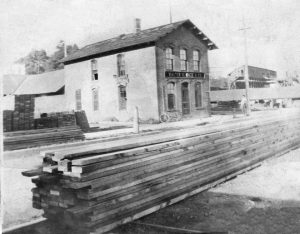
“There have been 17 major market events that have taken place in the U.S. since Maze Lumber Company opened in 1848,” Loveland says. “We face difficult events and think, ‘It’s the end of the world!’ Of course it’s not. We found ways to work through the issues, and we got back on track. From a family perspective, it shows we were able to face struggles and still survive.”
Loveland says the biggest event to impact the business during his tenure was the 2008 stock market crash.
“We are located in a community of about 40,000 people—following the crash, there was a year with no building permits,” Loveland says. “That was unheard of at the time, and luckily it’s been unheard of since. What we learned from that event was that diversification is key to success.”
At one point, lumberyards either focused on pros or DIYers. But meeting the needs of both customer bases has helped Maze Lumber Company remain a strong business.
Maze Lumber Focuses on the Future
Maze Lumber is celebrating 170 years of business this year and Loveland credits the company’s longevity to a variety of factors.
“Being one of the oldest lumberyards in the country is extremely fortuitous,” Loveland says. “Much of our success is because the people before me made more right decisions than wrong ones. A lot of it is luck, however, to continue as a cohesive family unit is critical, too. It makes me very proud knowing we have had family members in every generation who have kept the tradition going.”
Although the company is one of the oldest lumberyards in the country, Loveland says that longevity depends in part on the willingness to change, not remain stagnant.
“When I tell people our lumberyard is 170 years old, they might think of an old, unchanging business, but that couldn’t be further from the truth,” he says. “We’re extremely cutting-edge and have been over the years, otherwise we wouldn’t still be here.”
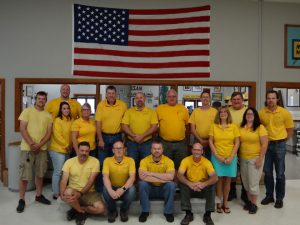
When advertising and promoting the business, Loveland says they make sure to highlight their long history in the community, by including it in their ads and billboards. To commemorate reaching 170 years, Loveland says he’s planning an anniversary party in November. He plans on inviting contractors and community members to celebrate 17 decades of success.
In addition to being a shopping destination for pros and DIYers for many years, the business has also been an employer for many locals as well.
“About two years ago, we had a few of our longtime employees retire,” Loveland says. “One worked here for about 30 years and the other was about 45. We’ve had very little turnover, which I believe goes back to the way we treat our employees. If you treat them well and respect and listen to them, they’ll be loyal.”
Although the company isn’t too concerned about e-commerce competition right now, they do understand the need to stand out next to their big-box competitors. Doing that requires providing quality products and maintaining a knowledgeable staff.
When considering what it takes for a family business to find success and continued longevity, Loveland says treating every customer with honesty and integrity is critical.
“We’ve had a sign in the office with a big picture of a lion, and it says ‘Customer is King,’ on it,” Loveland says. “Early in my career, I didn’t get it. Now I realize that’s the bottom line. You have to treat your customers that way to earn their business.”
 Hardware Retailing The Industry's Source for Insights and Information
Hardware Retailing The Industry's Source for Insights and Information



